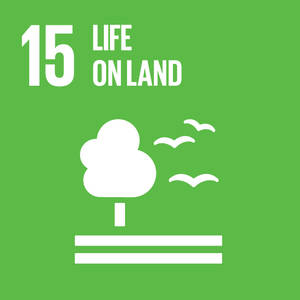Conflict is a major impediment to efforts to sustainably manage forests and achieve positive development outcomes in the forest sector. Forest conflict can result in a loss of income, employment, government revenues and environmental services, and it can lead to violence.
Given the growing scarcity of land and the increasing value of forests, conflicts over forests are likely to continue.
SFM goals can be realized if stakeholders work together to assess and address the many forest interests, build trust and cooperation, and seek solutions of mutual gain – a process called collaborative conflict management (CCM). CCM may require the involvement of professionals who can facilitate dialogue, encourage participation, bridge differences and facilitate collaborative solutions.
This module provides useful information to assist conflict-management professionals, forestry officers and other stakeholders to manage forest-related conflicts through collaborative approaches. It offers a practical “road map” for people who wish to address conflicts linked to SFM implementation through CCM. It explains how to move beyond adversarial forest politics, resolve disputes and build positive relationships among forest stakeholders for smooth planning and the successful implementation of SFM.
What are forest conflicts?
Conflicts or disputes occur when people perceive that their goals, needs, interests or values are threatened. This can be the result of a disagreement, but conflicts and disputes go beyond mere differences of opinion. In forestry, they are an expression of people’s differing (and often entrenched) values and priorities regarding the use of forest resources.
Conflicts exist everywhere. They are not always negative because they are sometimes necessary to bring about positive change. A conflict, therefore, may be positive, negative or neutral. How conflicts develop depends largely on how they are managed. Much can be done to prevent conflicts from taking violent or destructive courses by addressing their underlying causes at an early stage, whether at the local, national or international level.
Forest management is an inherent source of conflict because it has multiple objectives and therefore many stakeholders – such as local forest users, government agencies in and outside the forest sector, civil society, and the private sector – often with competing interests. In addition, forest management may be fragmented and subject to unclear, overlapping, competing or contradictory legal frameworks.
Conflicts of relatively low intensity may not lead directly to violence, but they may still play a role in fuelling “structural” violence, such as impeded development as well as disease, famine and forced migration. In many parts of the world, forests play important roles in livelihoods, identities and security, and conflicts over their control, management and use must be dealt with expeditiously. Conflict escalations increase the vulnerability of disadvantaged forest users and often result in human suffering, economic decline and environmental degradation.
Conflict over forests is not a new phenomenon. In many countries, forest peoples have been dispossessed of their lands and their forest assets stripped by outsiders such as loggers, pastoralists, settlers and hunters. Historically, forest communities have been hampered in defending their lands and forests by a lack of legal recognition and an imbalance of power, and external forces have often quickly overwhelmed them. Increasingly, however, forest communities with traditional links to forests are being recognized in – and empowered by – statutory laws, increasing the potential for collaborative approaches to conflict management that provide equitable outcomes.
What is collaborative conflict management?
Collaborative conflict management (CCM) can help prevent and manage forest conflicts. It comprises a wide range of informal approaches that involve: stakeholders working together to reach agreement on controversial issues; and the facilitation of social learning among individuals, groups and organizations to resolve forest-related conflicts.
The process of CCM has three main stages:
- the pre-deliberation stage, involving an analysis of the conflict and the development of a CCM strategy;
- the deliberation stage, involving the search for agreement; and
- the approval and implementation of the agreement.
CCM enables forest managers to:
- promote the participation of diverse or competing stakeholder groups in finding an agreement to which all stakeholders are committed;
- assist stakeholders in adopting attitudes oriented towards cooperation rather than the pursuit of individual interests;
- establish new forms of communication and decision-making on important issues, and raise awareness of the importance of equity and accountability in stakeholder communication;
- develop partnerships and strengthen stakeholder networks;
- create space in which stakeholders can communicate, with the aim of bringing about future agreements so that concrete action can be taken; and
- produce decisions that have a strong base of support.





